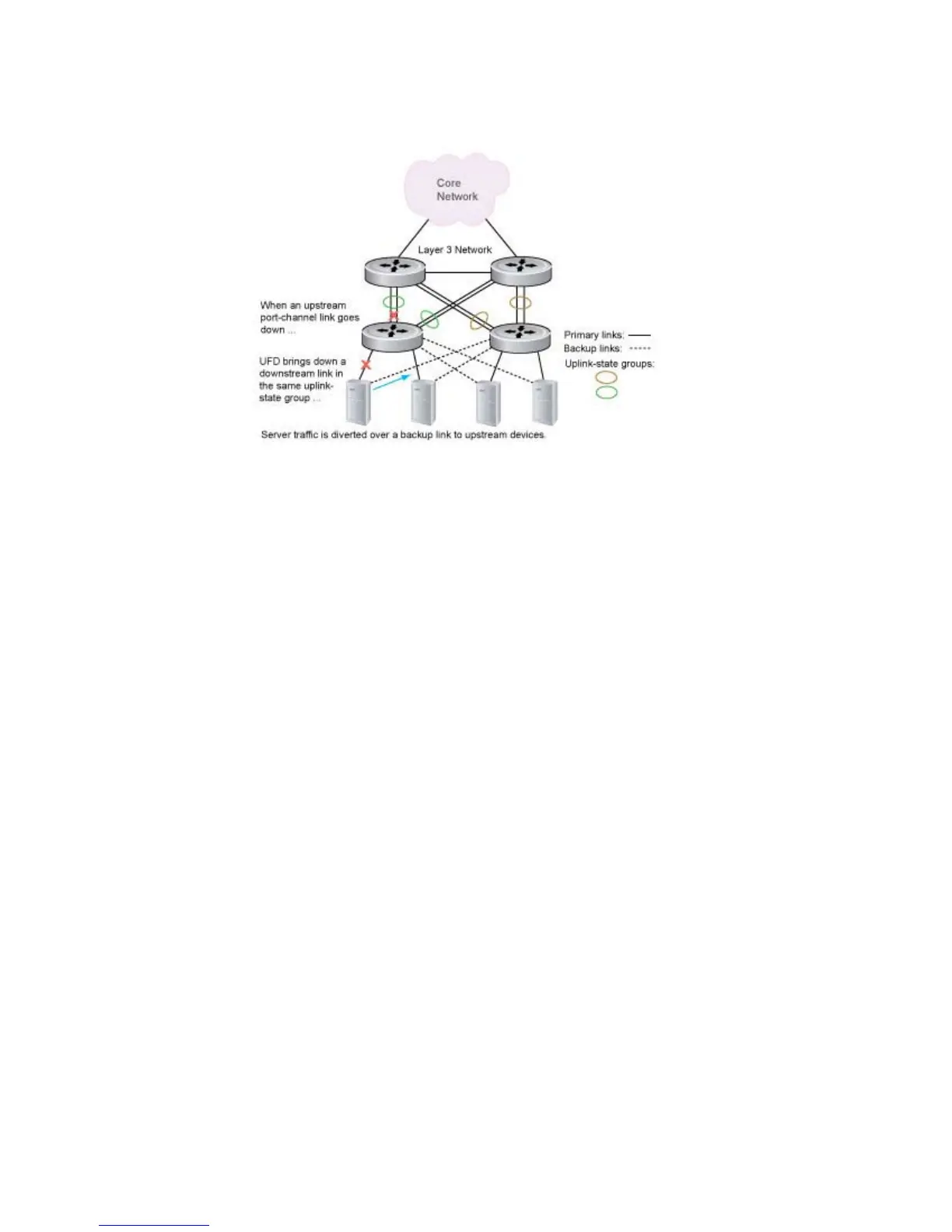Uplink Failure Detection (UFD) | 611
Figure 35-2. Uplink Failure Detection Example
If only one of the upstream interfaces in an uplink-state group goes down, a specified number of
downstream ports associated with the upstream interface are put into a link-down state. This number is
user-configurable and is calculated by the ratio of upstream port bandwidth to downstream port bandwidth
in the same uplink-state group. This calculation ensures that there are no traffic drops due to insufficient
bandwidth on the upstream links to the routers/switches.
By default, if all upstream interfaces in an uplink-state group go down, all downstream interfaces in the
same uplink-state group are put into a link-down state.
Using UFD, you can configure the automatic recovery of downstream ports in an uplink-state group when
the link status of an upstream port changes. The tracking of upstream link status does not have a major
impact on CPU usage.
UFD and NIC Teaming
Uplink Failure Detection on a switch can be used with network adapter teaming on a server (see Network
Interface Controller (NIC) Teaming on page 309) to implement a rapid failover solution. For example, in
Figure 35-2 the switch/router with UFD detects the uplink failure and automatically disables the associated
downstream link port to the server. The server with NIC teaming detects the disabled link and
automatically switches over to the backup link in order to continue to transmit traffic upstream.

